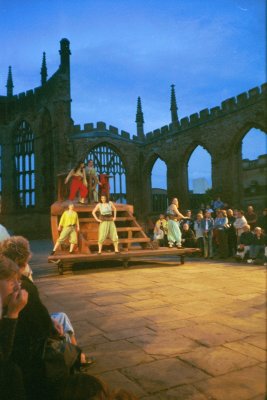When we are applying the community development process in our communities, the way in which it is applied (the art of community development) may be influenced by the type of development with which we are dealing. While community development programs may be classified in various ways, one simple classification that may be helpful is based on the following types.
Comprehensive Development
Here we are involved with the "whole" community, not just with the social or economic domains or with one or two sectors. Most commonly there are two sub-types of comprehensive development, locality and regional.
Locality Development is development in a relatively limited context, such as the local geographic community (village or town with surrounding farms). The goal is to develop the whole community in a balanced way.
Regional Development commonly involves a cluster of localities (single communities) in a smaller region or a larger region (such as a province). The strategy of applying the community development process in this setting is influenced particularly by the need for networking, collaboration, and partnerships among the separate localities in a multi-community context. The objective, however, is to ensure that development, to the greatest degree possible, enhances the whole of the region.
Sectorial Development
This type of development recognizes that emphasis is being placed on one sector or component of the community. Hopefully, the connections and influences on other sectors (health, education, arts, etc.) are recognized. There are two common subtypes: resource sector development and population sector development.
Resource Sector Development emphasizes, for example, mining, forestry, fishing, or agriculture (primary sectors), and manufacturing, processing, tourism, arts, etc. (secondary sectors). For many years, resource sector development has been the basis of much of our development, although there have been many times when the application of the community development process may have been neglected. This may be particularly true of the arts sector, which has often been treated as a "frill" in its relation to community (economic) development.
Can we more effectively implement the community development process to take advantage of the arts sector in employment creation, community enterprise development., and community quality of life? Population Sector Development involves applying the community development process in helping a specific group of people, either in the context of human resource development, such as training or retraining for managers or the unemployed, or capacity building or performance improvement for selected groups, such as aboriginal peoples, women, or arts entrepreneurs. In the arts sector, we must increasingly differentiate among the needs of the various groups within the sector, such as those in art, drama, dance, music, heritage, and so on. In marketing terms, we are "targeting" a selected group so that our (their) efforts may be more focused, effective and efficient. For certain purposes, the various groups will find it useful to join forces. One of these common purposes is community development.

County Galway Community Arts Network.
Social Planning Development
This type of development involves organizational/ institution building. It is sometimes referred to as developing social infrastructure.Organizational Design Development
This is where the development of new organizations/ institutions is the primary emphasis. With the community development process in mind, organizations are usually designed with structures and relationships through which democratic participation and shared leadership are fostered. They are designed also to deal with the unique nature of the projects and programs to be carried out. In the arts, examples might be the development. of a provincial marketing group, an arts corporation or cooperative, or a partnership.

County Galway Community Arts Network.
Educational Program Development
Involves planning programs which have teaching/ learning as their primary emphasis. Since community development is itself defined as an educational process, this type of community development is designed to foster intentional "learning by doing," to help people to develop the capacity to take on increasingly more difficult and complicated development projects and programs.
Thus, as illustrated above, we can conceptualize several types of community development. programs. As one develops experience in the community development process, it becomes easier to develop a classification of community development program types that make sense to one's own development work. It will be obvious that many experiences will combine two or more of the above types of development.
Further, one would not be surprised to find one or more of population sector development., resources sector development, organizational design development, and educational program development in both locality and regional development. Otherwise they would tend not to be comprehensive. By identifying the type of development in which we are involved in a given project or program, we are better able to properly plan and implement it.
Each type will call for its own unique planning, strategies, and supports. Perhaps the arts sector in Saskatchewan still has to work out an overall strategy for relating the arts sector to the future improvement of our communities, to the people who work in community development, and particularly the people who work in community economic development (CED).
